Chet DeVore was taken aback, if not incredulous.
“I’m a basketball coach,” he told his boss. “I don’t have enough experience to coach football.”
That was DeVore’s reaction in 1951 when Chula Vista High principal Joe Rindone, asked DeVore to head the Spartans’ football program.
Few administrators have been so prescient.
Forty-four wins, seven losses, and one tie later, DeVore, like many before and after him who trained to be educators, forsook the sideline and went into the halls of administration.
Few coaches have left such a legacy.
DeVore was 42-3 in his last four-plus seasons.
That the Spartan leader’s coaching career ended with a 26-0 loss to eventual Southern California and national champion San Diego did not dim the luster.
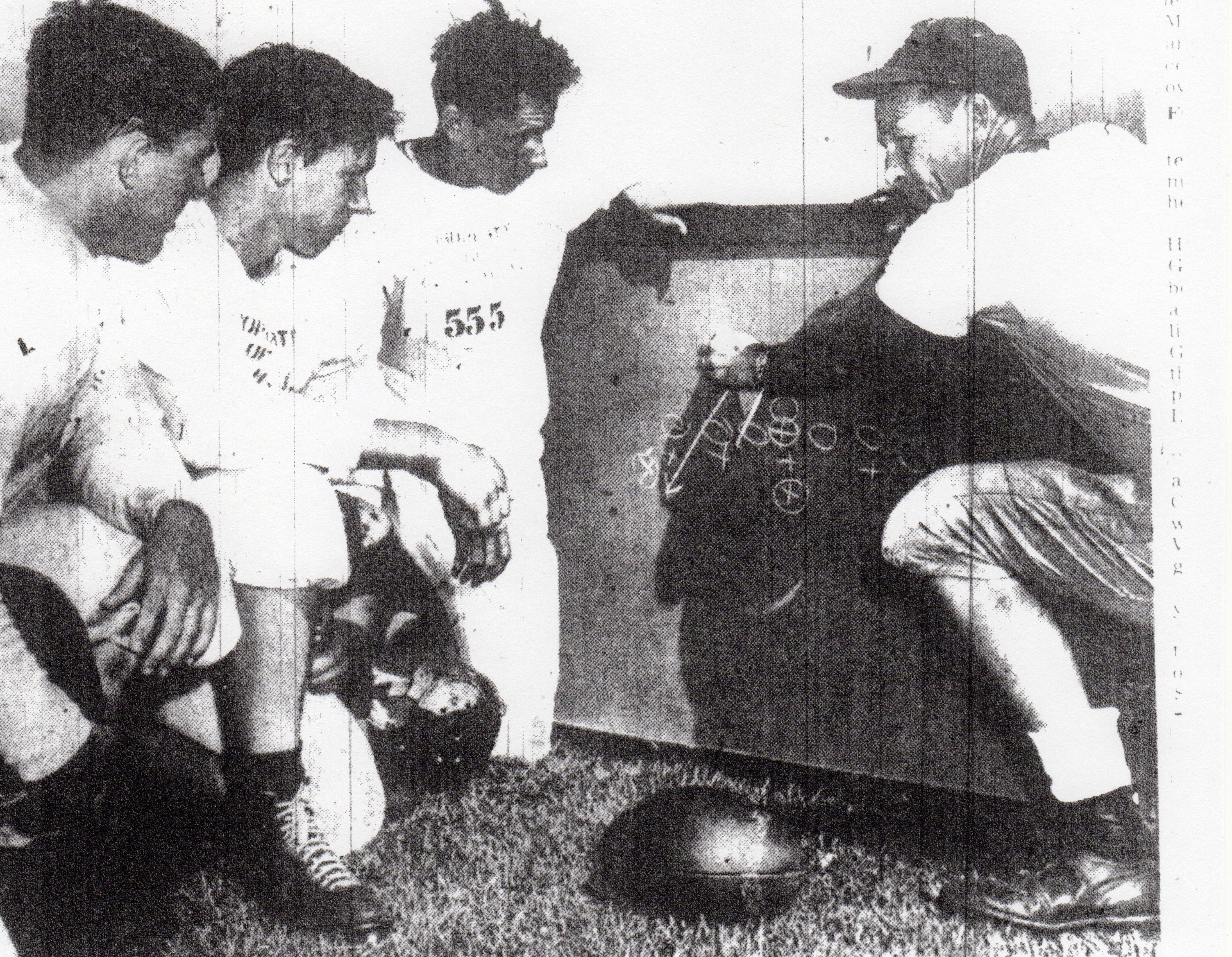
THIN MAN
DeVore played all of the sports at Chaffey High in Ontario but, as a skinny 120-pounder at graduation, he decided that football may not be his calling and concentrated on basketball in college.
DeVore was a member of the San Diego State team that won the National Association of Intercollegiate Athletics championship in Kansas City in 1941.
A desire to move on and coach basketball was put on hold after graduation in 1942, when DeVore enlisted in the Marine Corps and fought in the Pacific theater in World War II.
BATTLEFIELD HONOR
DeVore was awarded the bronze star at Okinawa and Purple Heart at Bougainville.
According to the Bronze Star citation, in part, “Capt. DeVore, as intelligence officer for the (Sixth Infantry) battalion, displayed exceptional ability and courageous conduct during the entire Okinawa campaign.
“On 27 April 1945 he personally trailed a large number of enemy troops in the dense, weeded country north of Tiara so efficiently that on 28 April 1945 he was able to lead the battalion to their (enemy’s) position.
“(DeVore’s) initiative and brave actions in this instance were responsible for the successful attack on the enemy in which approximately one-hundred and fifty of them were killed and the battalion suffered only minor casualties.
“On Oroku Peninsula and again on the Southern end of Okinawa (DeVore) efficiently established forward observation posts from which much valuable information was obtained, although (DeVore and his men) often were under heavy enemy fire.”
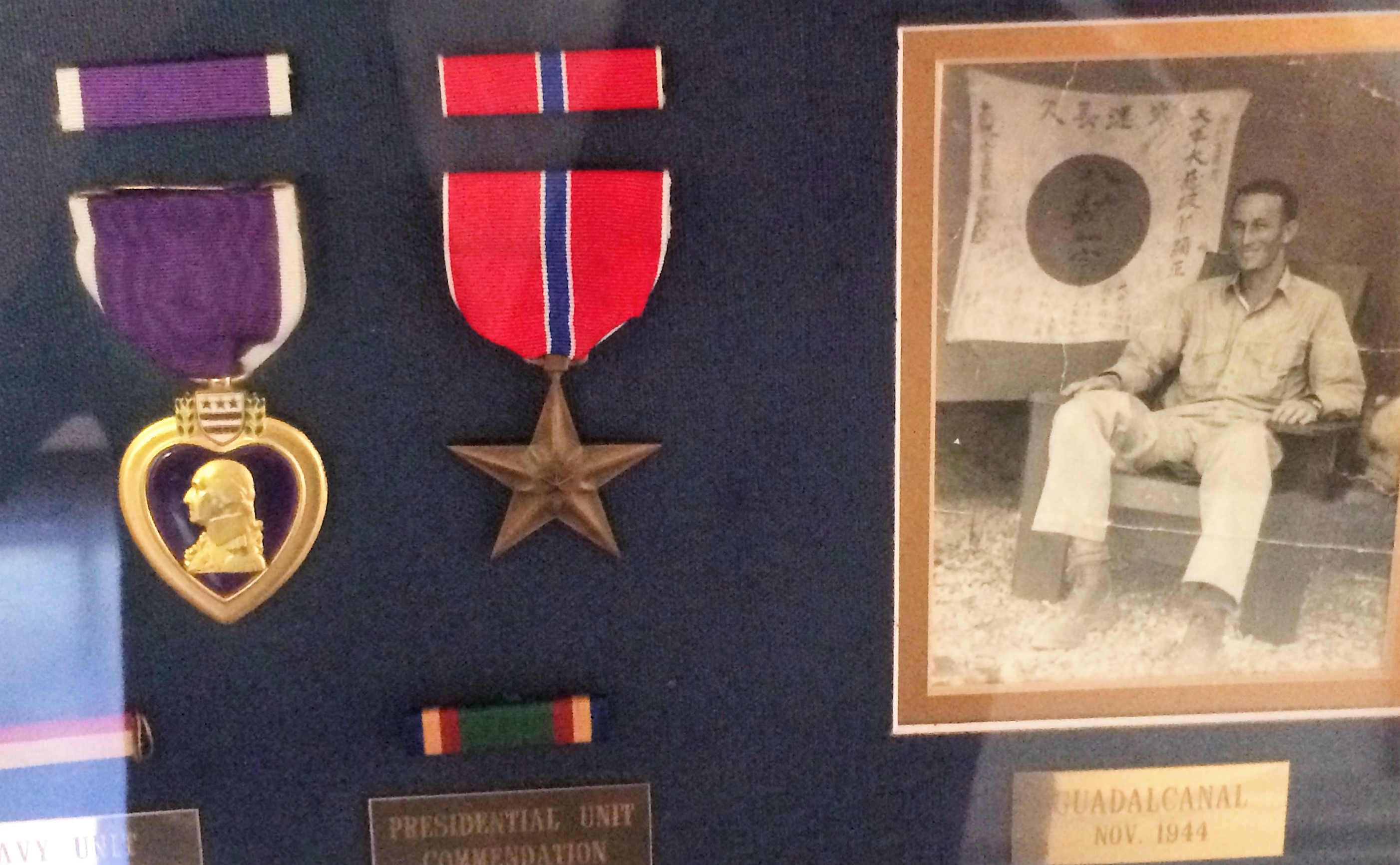
Discharged from the Marine Corps in 1946, DeVore began teaching at Southwest Junior High in Nestor and a year later was appointed varsity basketball coach by Rindone at the new Chula Vista High.
The hoops mentor was 67-58 in six seasons, including two Metropolitan League championships, one tie for first, and a Southern California small schools title in 1950-51, the program’s third season.
SLOW START
Chula Vista was a combined 13-23-1 in its first four football seasons under Gordon Cox and Morris Shepard. When Shepard left to pursue advanced education at San Diego State, Rindone turned to DeVore.
DeVore told Jim Trinkle of The San Diego Union that he wasn’t underestimating his qualifications for the job when Rindone called.
“We won four, lost four, and tied one that first year and that was the best showing a Chula Vista team had made since the school opened in 1947.
“I can see now though that we might have won the championship that year if I had known some of the things I learned later.”
DeVore pointed out that “Anybody can tell you it’s suicide to change formations after the start of the season, but we did it in ‘fifty-one.
“We started out with the double wing, lost our first two games and then switched to the T. We finally got going late in the season and won our last three straight (Editor’s note: sandwiched around a 6-0 loss to 8-2 Coronado).”
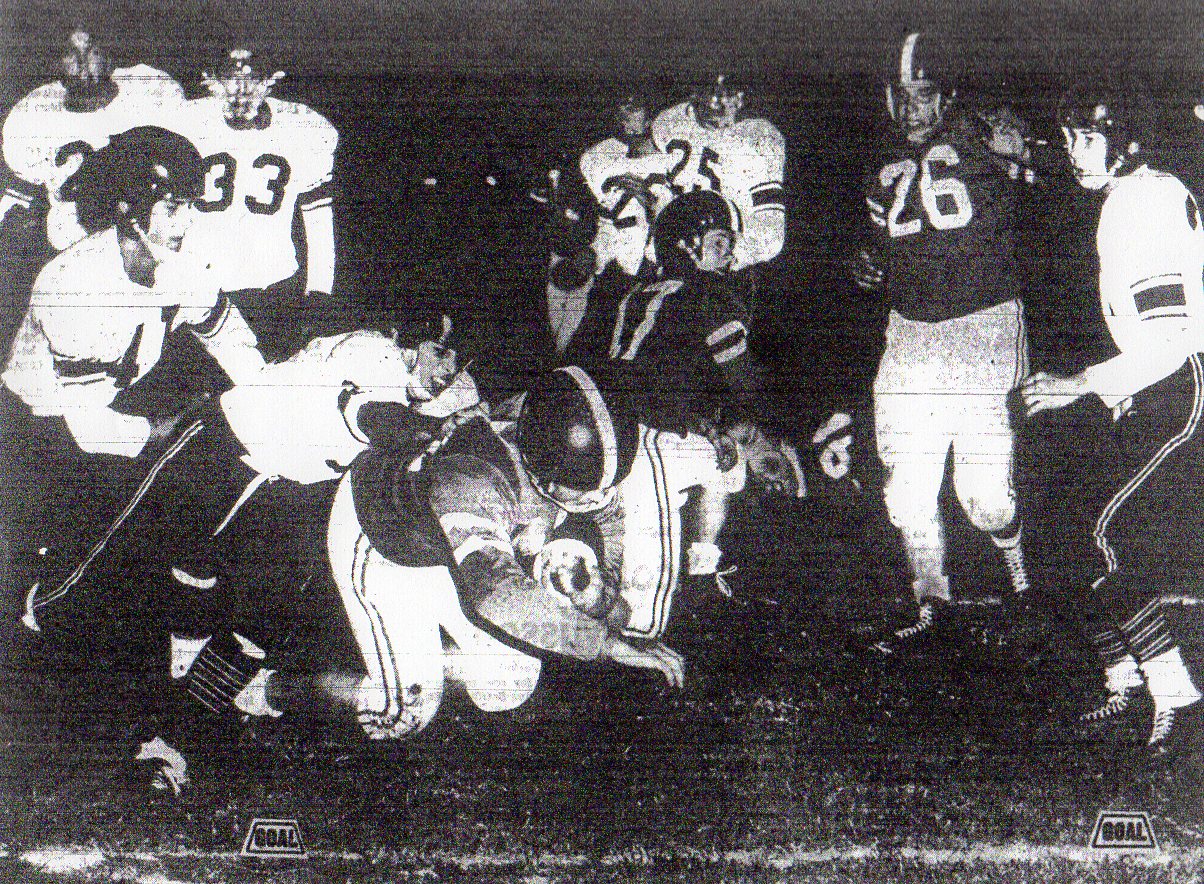
PLAYOFFS THEN CHAMPIONSHIPS
The Spartans program was rolling.
Chula Vista won its first Metropolitan League title in 1952, dropped a first-round playoff to Laguna Beach, and then won consecutive Southern California Southern Division (of two CIF small schools groups) championships.
Graduations claimed most of DeVore’s 1954 squad but Chula Vista had gotten into the habit of reloading instead of rebuilding.
The Spartans also were moving up in class.
They outscored eight straight opponents, 247-34, and were aligned in the 16-team Central Group (large schools) playoffs.
San Diego High was too much for the Spartans, but DeVore’s .856 winning percentage set a record for San Diego County coaches (minimum of 50 games).
The record still was intact well into the 21st century.
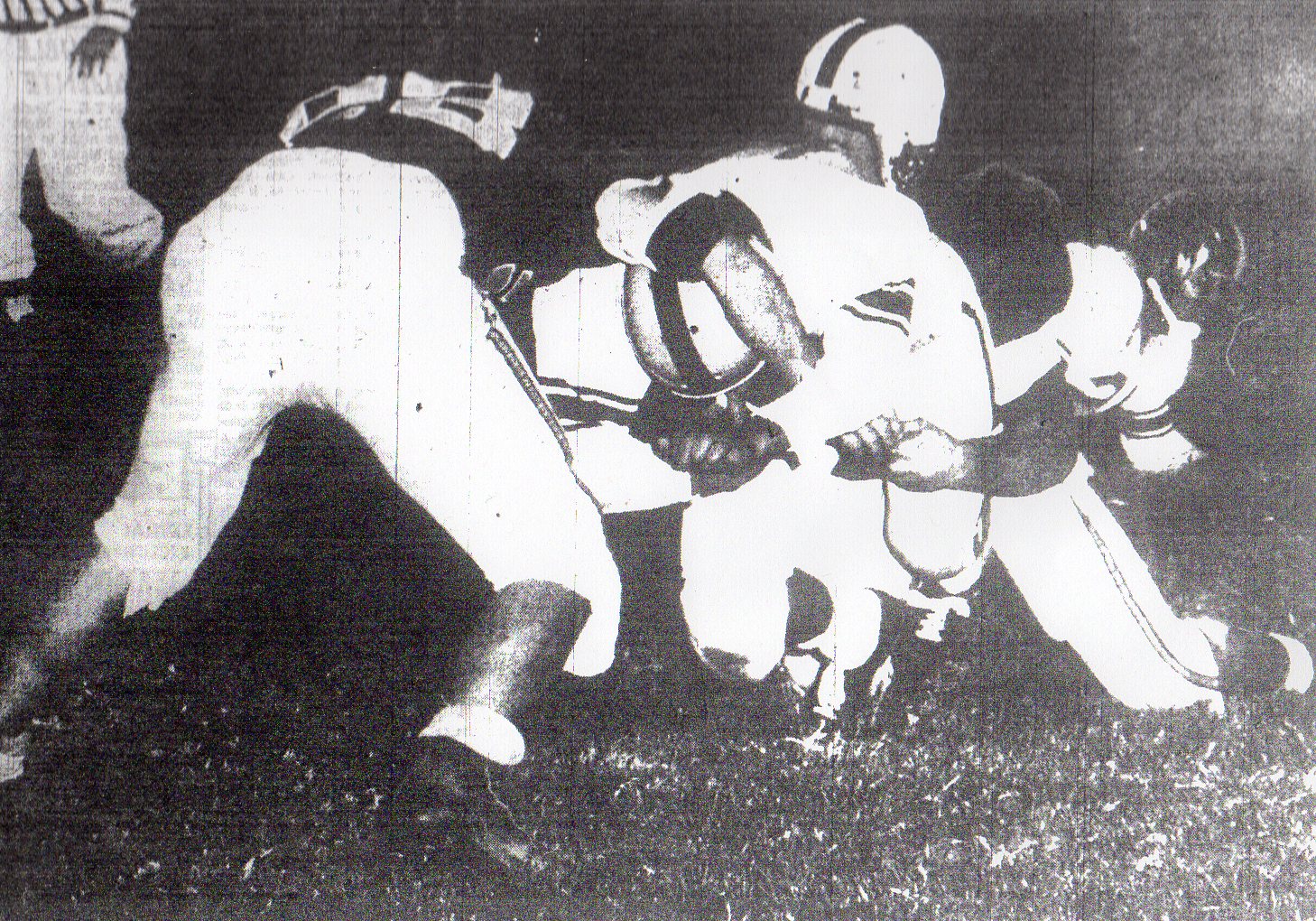
NOT A FAN OF SAN DIEGO HIGH
Floyd Johnson, principal at Hoover since it opened in 1930, was retiring at the end of the school year.
Johnson, whose animus toward San Diego High was increasingly evident over the years, many of which included lopsided football losses, apparently tried to torpedo the Hillers’ chances in the playoffs.
Midway through the season defensive halfback David Grayson and end Luther Hayes moved with their families from the San Diego enrollment area to Lincoln’s.
Johnson, long a regarded figure among Southern Section administrators, complained that Grayson and Hayes should be immediately ineligible at San Diego, now that they lived near Lincoln. City Schools officials did not penalize the Cavers. The players stayed eligible.
Hayes played football and basketball for Lincoln in the 1954-55 school year, transferred to San Diego for track in ’55, and was back on the basketball floor at Lincoln for the ’55-56 campaign.
The story of the Hoover principal’s dislike for the Hillers was related to me by the late Walt Harvey, who played football at Hoover. Harvey also was Lincoln’s first coach.
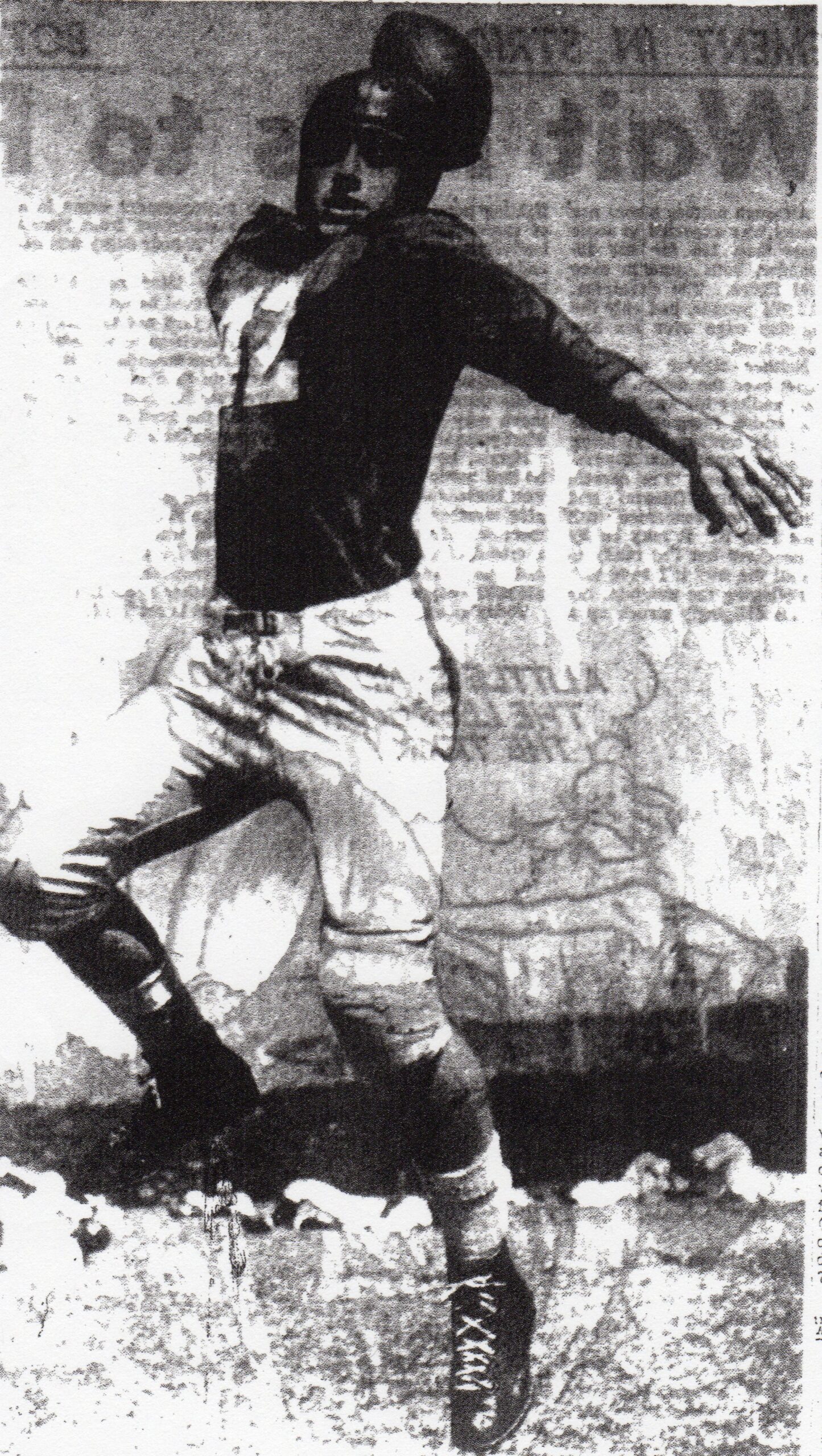
RAMONA, THE BULLDOGS, NOT OPERA
Residents of the mountain community east of San Diego didn’t expect much when Glenn Forsythe arrived in 1954.
The Bulldogs, mired with a sluggish history that included an all-time, 42-60-7 record since 1938, were about to experience stunning success.
Before he left for a journalism teaching position at Reedley Junior College in Central California in 1959, Forsythe was able to get local boys to ditch, or at least postpone, their farming chores and turn Ramona into a “football school.”
Fifty-four of the 96 boys enrolled turned out for football.
The Bulldogs won their first 15 games under Forsythe, 7-0 in 1954, and 8-0 this season. Their unbeaten run ended in a 14-7 loss to Banning in the Southern Section Southern Division playoffs.
Fullback Ernie Trumper was the Bulldogs’ main contributor with 15 touchdowns and 6 PAT.
Trumper was a small schools rarity, invited to play in the Breitbard College Prep All-Star game in 1956.
Forsythe’s Bulldogs became a juggernaut, posting an overall, 42-4 record through 1959.
The coach had previously served as an assistant coach for four seasons at Fallbrook and before that had a 44-10 record as head coach at six schools in Iowa.
HORNETS FRUSTRATED
Lincoln, behind quarterback Bob Mendoza, backs Joe (Grinder) Vinson and Leonard Elston and budding stars Bob Moss, Brad Griffith, Marvin Hudkins, and Leonard Burnett, was touted as a challenger for the City Prep League championship in preseason accounts.
Reality was another factor. The 49th Street team, in its second varsity season, finished 3-4-1.
San Diego reduced Lincoln’s rushing attack to minus 10 yards in a 19-0 victory and Hoover overcame the fog and a 20-14 halftime deficit to defeat the Hornets, 34-20.
Most galling defeat was at Point Loma. Lincoln was struck with a 15-yard penalty that put the ball on its one-yard line in the final seconds.
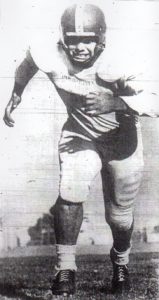
Point Loma scored a tying touchdown on the next play as the game ended, and kicked the PAT for a 7-6 victory.
The Hornets earlier took a 6-0 lead but were penalized when one of their linemen was flagged for moving before the PAT kick.
Lincoln’s vice principal, George Parry, hurdled a sideline fence when the game ended and charged referee Bill Raaka in the middle of the field.
No blows, but strong words were exchanged.
THE SEASONAL SHROUD
Fog made its annual late-November appearance and dominated Chula Vista’s 13-6, Metropolitan League title-clinching victory at Helix.
“We have learned that Chula Vista has scored but missed goal and now leads, 6-0,” was the announcement by Helix stadium public address Bob Divine, who doubled as the Highlanders’ basketball coach.
The Spartans had scored their touchdown several minutes before Divine’s pronouncement.
“I’ve never felt more helpless in my life,” said Chula Vista boss Chet DeVore.
”When the ball was on the Helix side of the field, I couldn’t tell you how many men we had out there, what down it was, or anything that was happening.”
DeVore was virtually clueless.
“In the first quarter, one of the kids I had taken out of the game told me we were down on the four-yard line. That was the only way I had of knowing what was going on.”
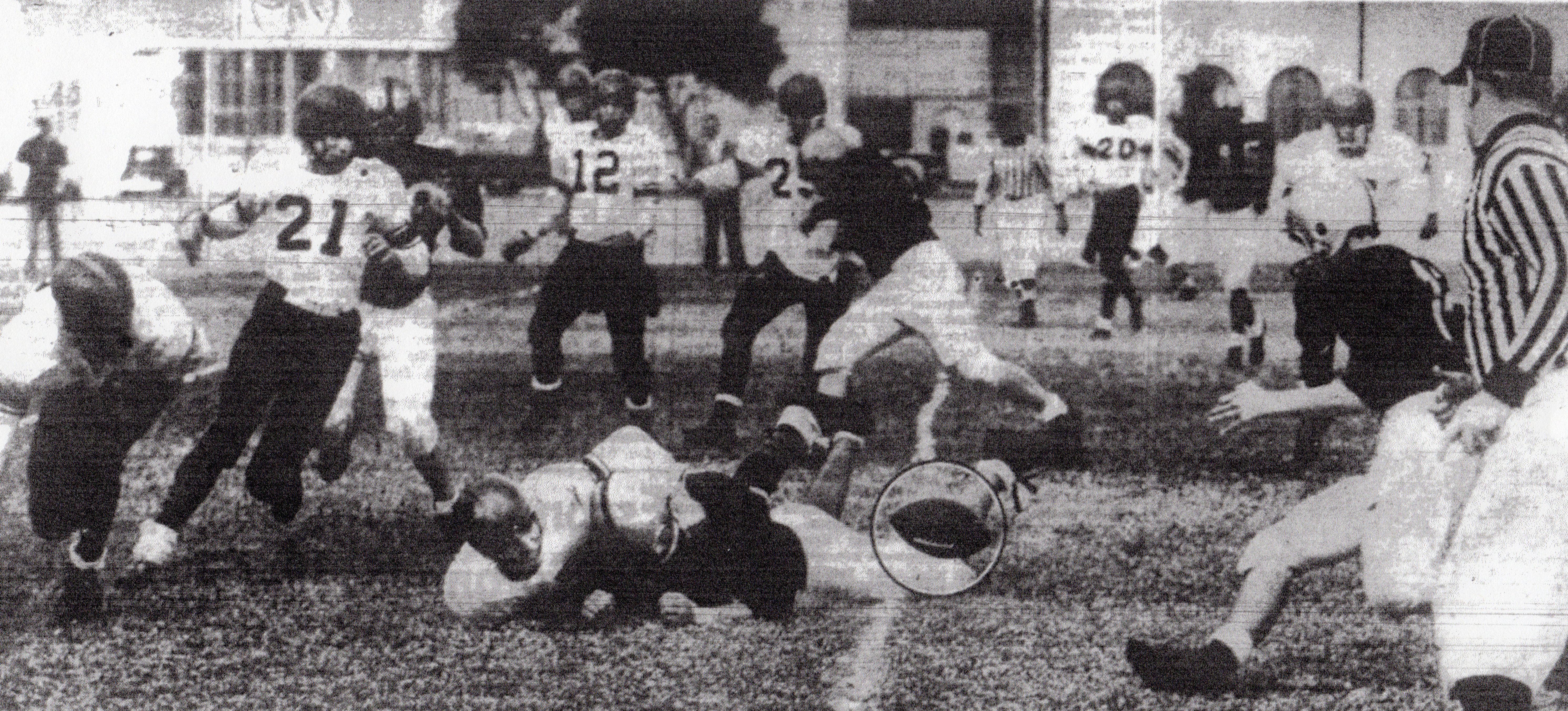
SIGN OF THE TIMES
La Jolla and Kearny announced they would leave the City Prep League for at least two years in football, because of declining enrollment and (not said), one-sided losses.
The rise of Mission Bay robbed La Jolla of a strong talent base in Pacific Beach and Mission Beach that was instrumental in the Vikings’ reaching the Southern California finals in baseball in 1953 and the semifinals in football in 1952.
Kearny also felt a pinch from Mission Bay and Federal housing population in Linda Vista was in decline. The large, residential Serra Mesa community to the East was in its infancy. Kearny had played for the City League football championship as recently as 1953.
SAINTS MAKE MOVE
With La Jolla and Kearny bailing, St. Augustine made a formal application for admittance into the City Prep League.
“We have seven hundred male students in the top three grades,” said Fr. John Aherne, school principal. “I feel certain we can field a representative team.”
The Saints had tried to find league representation several times over the years and they were getting closer. They would join the CPL in 1957.
St. Augustine’s last affiliation was with the Los Angeles-area Southland Catholic League from 1945-50.
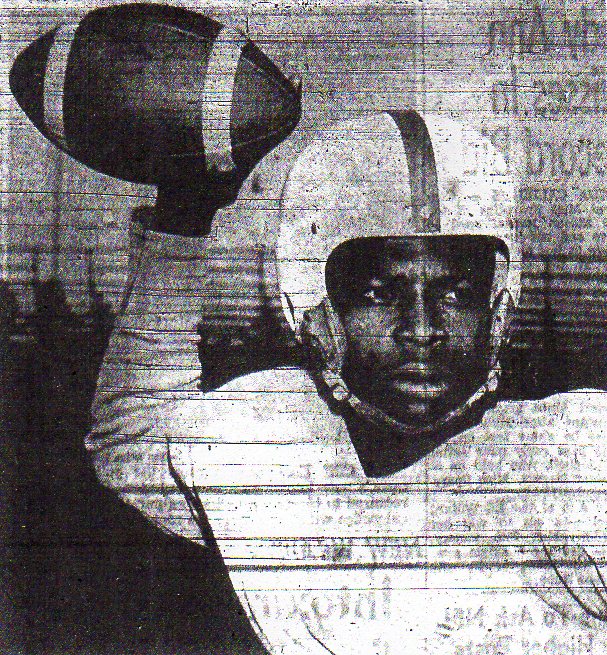
THEY TRIED METRO
St. Augustine and La Jolla had made overtures to the Metropolitan League, but the Metro turned them down and announced that it would go to a round-robin league schedule in 1956 that promised to drastically curtail nonleague opposition.
Some teams would play six league games and others seven. The winner would be determined by won-loss percentage.
The five-team Metro would grow to six with the addition of Mount Miguel in 1957.
SOUTHERN PREP SHAKEUP
Rancho del Campo and San Miguel School joined Julian, Ramona, Brown Military, and Mountain Empire.
Army-Navy left and would pursue independent status.
FARM HANDS
Of the 65 players who turned out for football there was not a single letterman on hand at El Cajon Valley, the third school to open in the East County, siphoning off more than 1,000 students from enrollment-bulging Grossmont.
There were a couple unique players, senior center Don McGoffin and his junior tackle brother Dick.
The Magoffins left school after practice each day and returned home 20 miles distant to milk cows, feed chickens, and perform other duties on the ranch they shared with their parents.
“They don’t mind,”said Braves coach Glenn Otterson. “I talked it over with their parents, who said it was okay for them to play football, as long they got their chores done.”
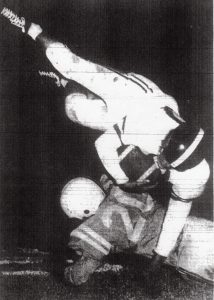
TRUE GRID
The all-Southern California squad defeated the Los Angeles City team, 23-0, before 6,500 in Balboa Stadium in the Breitbard College Prep game in August…Hoover’s John Adams was one of the winners’ most productive with 84 yards in 10 carries…Bellflower was coached by Walt Hackett, a San Diego Chargers assistant coach from 1962-66…Point Loma’s rookie head coach, Bennie Edens, had been on the coaching staff of Don Giddings’ since 1949 and was the Pointers’ baseball coach from 1951-54…Tom Carter, new mentor at St. Augustine, played football at Los Angeles Cathedral, was a quarterback at Notre Dame, and coached at Cincinnati’s Bishop Elder and at Santa Ana Mater Dei…La Jolla coach Frank Smith said his squad had only six players who weighed at least 150 pounds…Evening Tribune writer Jerry Brucker noted that La Jolla had brothers Clyde and Doug Crockett, but probably also could use Davey…

Pete Ketella was my receivers coach at Stanford 1974-1976…
He coached or scouted for the Packers many years. Was in my Army Reserve unit at Fort Rosecrans.
Coach DeVore wasn’t the only one clueless at that 1956 Championship Game at Helix. All of us in the stands as well as referees on the field were also clueless. Keith Jenkins a Helix defender was in the C. V. end zone on one play but the T. D. was disallowed because the refs lost track of where the ball was. Following that season Helix began to dominate the league featuring the running of Gary Dunn and the aerials from QB Bob Shultz to speedster, Bill Ernest. However, in the championship game that combination failed to connect and Hoover’s QB, Denny Ball and his receiver beat Helix at its own game at Aztec Bowl.
Good memory, Sid. I don’t know if I’ve heard of a worse fog game than that one. I saw Bill Ernest run track for three years. He also was one of the Metro League’s top scorers in football. I was at the Hoover-Helix playoff. The Cardinals’ quarterback was Gary Bailey, who handed off to Bobby Ball and Denny Berg. Hoover’s top receiver was Bob Williams. Thanks for exploring our blog and for writing.
Rick,
Thanks for helping clear my foggy memory. That “fog game” would have been the Fall of ’55 making it the fall of ’56 for the championship Hoover-Helix game. Thanks for filling out with better accuracy the Hoover stars of that game. Coach Welbaum would have been better served to use more often his other weapons Gary Dunn and Gael Barsotti perhaps. Hoover’s defenders successfully interfered with the Shultz to Ernest timing.
You mentioned Frank Smith. He started his coaching and teaching career c.1948 at Wilson Junior High. He was also a long time resident in my neighborhood. Thank you for the in depth story on Chet DeVore, found it very interesting.
Great info Scoops.
Walt Harvey coached at La Jolla and after a couple years at Lincoln was able to get Frank Smith transferred from La Jolla to Lincoln. Harvey opened the Crawford program in 1957 and Smith moved to Crawford with Harvey. When Harvey retired after the 1962 season, Frank replaced Harvey as Crawford’s head coach. Smith played on the 1943 Hoover team that was 5-1 and beat San Diego High. One of the Hoover coaches was Bob Breitbard.